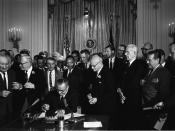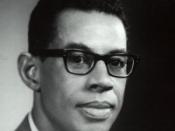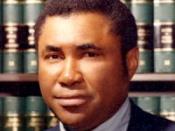I am a firm believer that no one is perfect. That goes especially for employers who have a large number of responsibilities. As Daniels stated in her article in Fortune Magazine, Wal-Mart is "the nations' biggest company and largest private employer." Considering that fact, it is no wonder they are sued over 6,000 times per year. The case of Women vs. Wal-Mart has the potential to become the largest discrimination case ever. Throughout this paper, I will discuss which legal statutes gave the Equal Employment Opportunity Commission (EEOC) jurisdiction to prosecute this case, what I think would be a fair settlement in a case like this, and what I base my judgment on. I will also discuss how I feel organizations can pre-empt this type of case.
First, I will discuss what statutes gave the EEOC jurisdiction to prosecute this case. There are several statutes giving the EEOC jurisdiction over this case.
The first is Title VII of the Civil Rights Act of 1964. This statute "prohibits employment discrimination based on color, religion, sex, or national origin." This statute gives jurisdiction to the EEOC by virtue of the fact that the suit was filed on the basis that female employees are paid less than male employees for the same jobs, are passed over for promotions, and retaliated against when they complain. This type of discrimination based on sex is in direct violation of Title VII of the Civil Rights Act of 1964. Of course, Title VII is a sort of "catch all" for any discriminatory acts or cases. To be a bit more specific, I will discuss a more thorough statute, the Equal Pay Act of 1963.
The Equal Pay Act of 1963 specifically prohibits discrimination on "the basis of sex in the payment of wages or benefits,


